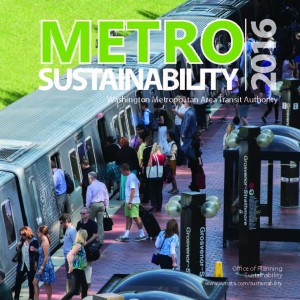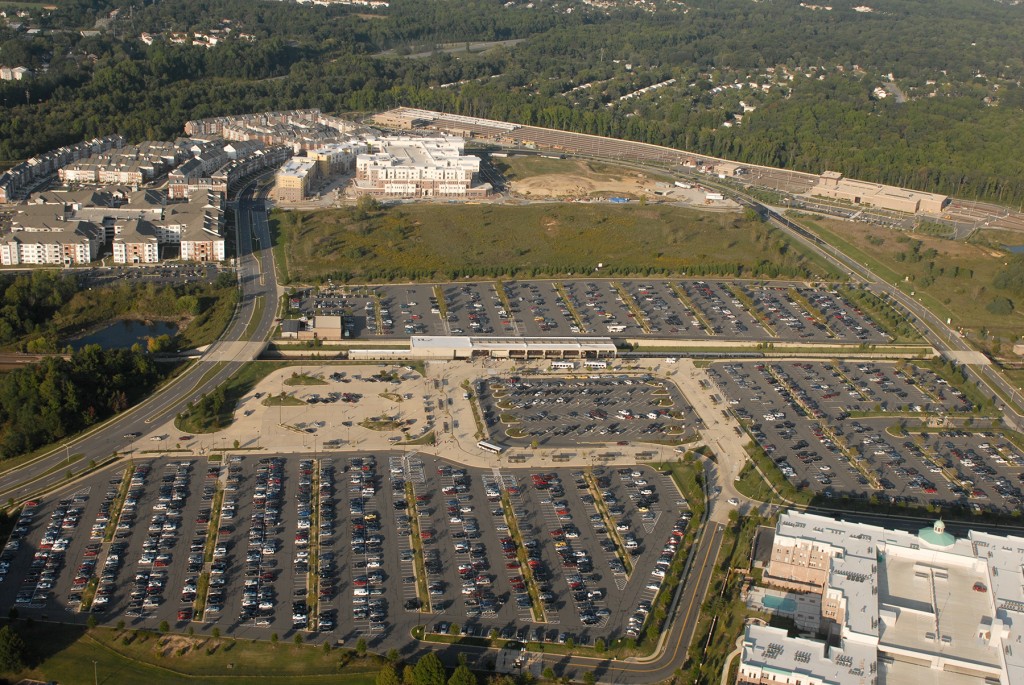As Earth Day approaches, we’ve documented the strong foundation of sustainable practices at Metro in our newly updated Sustainability Report.
 Metro has launched a rebuilding and service campaign that is aimed to bring riders back to Metro by providing safe effective and reliable service. Because service is one of the biggest sustainability benefits transit provides, rebuilding its ridership will help the authority reach the regional ridership, climate change and connected communities goals as outlined in Metro’s Sustainability Initiative.
Metro has launched a rebuilding and service campaign that is aimed to bring riders back to Metro by providing safe effective and reliable service. Because service is one of the biggest sustainability benefits transit provides, rebuilding its ridership will help the authority reach the regional ridership, climate change and connected communities goals as outlined in Metro’s Sustainability Initiative.
Metro’s annual sustainability report provides a rare view into Metro’s efforts to achieve the sustainability goals it set for itself – reporting on successes and setbacks alike. The past and future projects list under each target reads like an encyclopedia of transit agency best practices from testing energy efficient switch heaters to designing pedestrian accessible stations.
Rebuilding sustainably where possible will help Metro achieve long term financial savings while creating a cleaner, more modern, safer, and more reliable system. These investments will help Metro on it’s trajectory to reach its ambitious but achievable sustainability targets. To read more about Metro’s achievements to date and upcoming projects, check out Metro’s 2016 Annual Sustainability Report.
Tell us what you think of Metro’s sustainability efforts. We are always listening to new ideas for potential projects. Submit your ideas online or email them to planning@wmata.com.
After successfully testing a battery at West Falls Church, Metro is looking into more ways of re-capturing braking energy from trains. This could save operating costs and improve environmental sustainability, too.

FTA Visit to WMATA Battery Storage Pilot at West Falls Church
Metro spends approximately $50 million each year on electricity to move our riders and railcars around the system. Last month, the Federal Transit Administration (FTA) released a final report they commissioned Metro to conduct on technology to capture excess energy from regenerative braking through energy storage. The project was conducted by Metro and Kawasaki Heavy Rail Inc. at Metro’s West Falls Church substation as a “proof of concept” test of nickel-metal hydride battery technology as a storage media to capture otherwise wasted railcar braking energy from the direct current third rail.
Although the battery is headed back to Kawasaki, the demonstration was a success. We learned how the technology could work with our infrastructure, and how the battery technology supports the asset management, safety and resource efficiency work of the FTA’s Office of Research, Innovation and Demonstration in the following areas:
- Energy savings of approximately $100,000-200,000 that can reduce transit agencies’ utility consumption and peak power demand charges.
- Voltage support to reduce line loss on the third-rail power distribution network. In particular, this offers significant benefits to system performance between traction power substations (fed from the local utility) providing a more efficient energy transfer to railcars.
- Emergency power support to move stationary railcars to safe access points in the event of a power outage from the local utility.
- Augmenting existing traction power substations to support revenue service during maintenance downtime, and/or enhancing power supply as part of traction power upgrades to support better service such as Metro’s 100% 8-car train expansion.
Metro is now analyzing of how battery technology could be scaled more widely throughout the system. As part of this process, Metro’s engineers are monitoring the results of similar energy storage/energy saving projects that have been undertaken by peer transit agencies such as the Southeastern Pennsylvania Transportation Authority and London Underground.
As the cost of battery storage media such as nickel-metal hydride and similar lithium ion technology continues to fall, the economic benefits to rail transit will continue to grow. With the publication of this final report, Metro’s engineers’ commitment to strategic federal research provides a tangible example of how the Authority can support emerging technology as part of an investment in cost-effective new technology, and efficiently manage operating expenses.
Metro is seeking partnership to deliver up to 13 megawatts of solar electricity at nine different locations.
WMATA has a fair amount of real estate, and some of those assets are ripe for the installation of technology to harness energy from the sun. The Office of Planning began studying where this might in fact be feasible and concluded that there were a number of places where sun patterns and construction feasibility and power draw potentials all coincided to suggest potential solar capacity installation. Installing this capacity can cost money up front, so Metro is pursuing partners who can engage with us in what are called Solar Power Purchase Agreements (PPAs).

Metro’s parking lots, like this one at the Branch Avenue station, may soon sprout solar carports.
Not only do we expect to reduce operating costs and support renewable energy without using limited capital dollars, installing solar carports in parking lots gives customers improved lighting and shelter from the elements. Maximizing the use of Metro’s assets under a lease or performance-based contract structure such as a PPA supports the focus of the Authority to achieve the resource efficiency and regional sustainability targets set as part of Metro’s Sustainability Initiative.
What do you think of this potential change to Metrorail stations?
On-Site Solar Power Solicitation
 Metro has launched a rebuilding and service campaign that is aimed to bring riders back to Metro by providing safe effective and reliable service. Because service is one of the biggest sustainability benefits transit provides, rebuilding its ridership will help the authority reach the regional ridership, climate change and connected communities goals as outlined in Metro’s Sustainability Initiative.
Metro has launched a rebuilding and service campaign that is aimed to bring riders back to Metro by providing safe effective and reliable service. Because service is one of the biggest sustainability benefits transit provides, rebuilding its ridership will help the authority reach the regional ridership, climate change and connected communities goals as outlined in Metro’s Sustainability Initiative.



Recent Comments